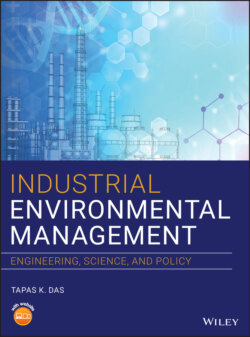Читать книгу Industrial Environmental Management - Tapas K. Das - Страница 163
Disadvantages
Оглавление1 Implementation of ISO 14000 standards can be a tedious and expensive process.
2 ISO 14000 standards can indirectly create a technical trade barrier to both small business and developing countries due to limited knowledge and resources (e.g. complexity of the process and high cost of implementation, lack of registration and accreditation infrastructure, etc.)
3 ISO 14000 standards are voluntary. However, some countries may make ISO 14000 standards a regulatory requirement that can potentially lead to a trade barrier for foreign countries who cannot comply with the standards.
4 Certification/registration issues, includingthe role of self‐declaration versus third‐party auditingaccreditation of the registrarscompetence of ISO 14000 auditorsharmonization and worldwide recognition of ISO 14000 registration
Auditing a facility for certification involves several steps. Proper planning and management are very essential for effective auditing. The (lead) auditor must prepare an audit plan to ensure a smooth audit process. The audit plan must, in general, remain flexible so that any changes to the audit that are found necessary during the actual audit process can be made without compromising the audit.
An audit plan must include the following 10 items:
1 A stated scope and objective(s) for the audit. This includes the reason for conducting the audit, the information required, and the expectation of the audit.
2 Specification of the place, the facility, the date of the audit, and the number of days required to perform the audit.
3 Identification of high‐priority items, the facility's and/or organization's EMS.
4 Identification of key personnel who will be involved in the auditing process.
5 Identification of standards and procedures (ISO 14001) that will be used to determine the conformance of various EMS elements.
6 Identification of audit team members, including their special skills, experience, and audit background.
7 Specification of opening and closing meeting times.
8 Specification of confidentiality requirements during the audit process.
9 Specification of the format of the audit report, the language, distribution requirement, and the expected date of issue of the final report.
10 Identification of safety and related issues associated with entry and inspection of various portions of the facility, along with other equipment required to conduct an effective and efficient audit.
